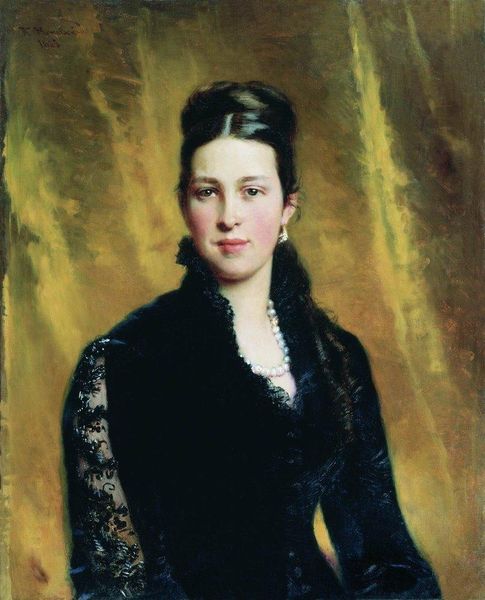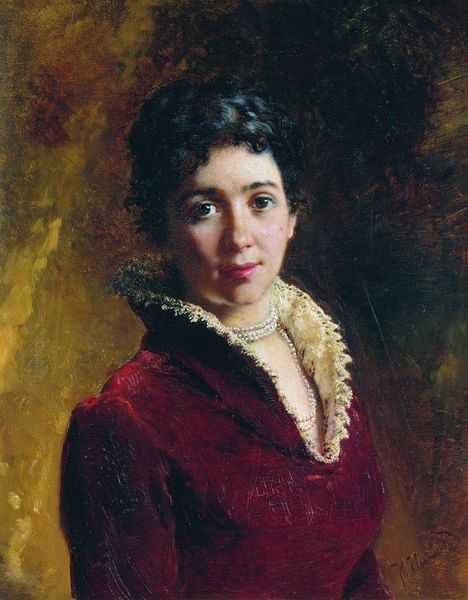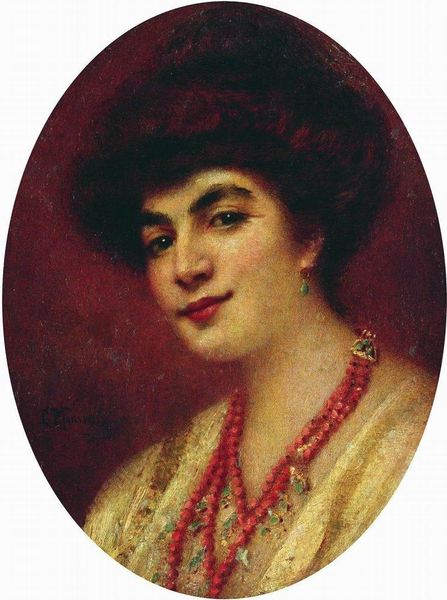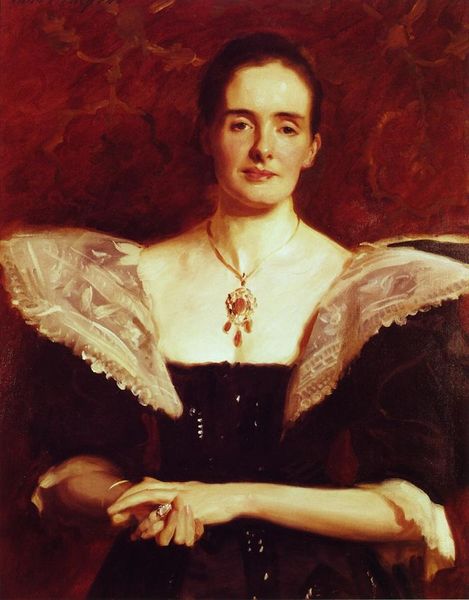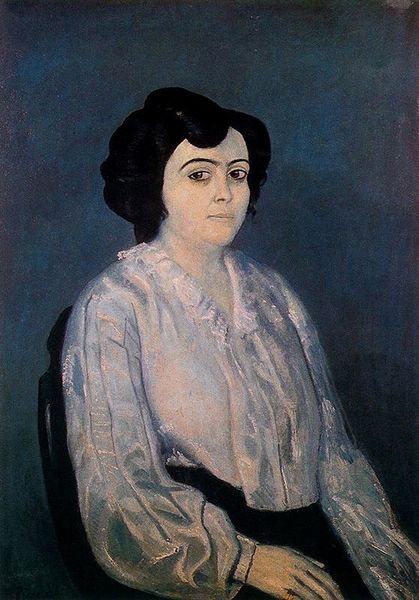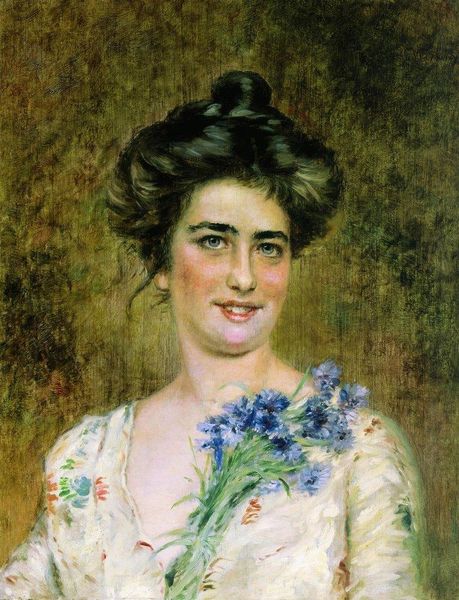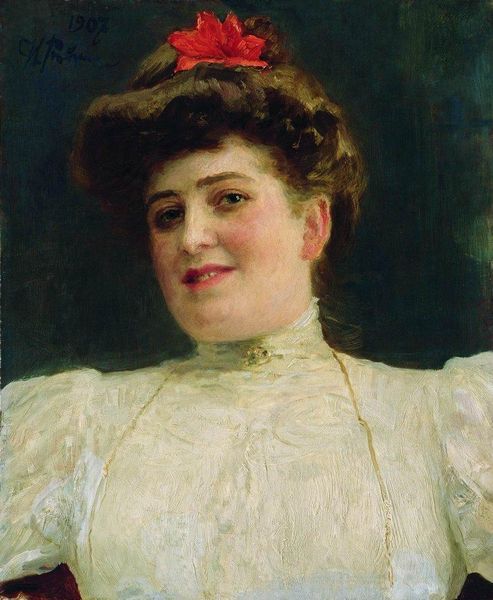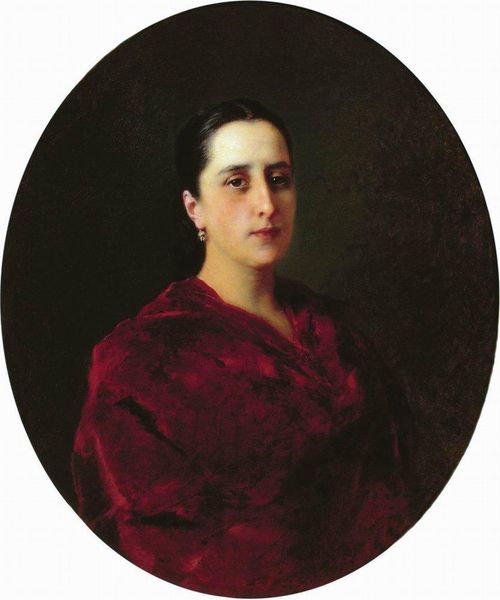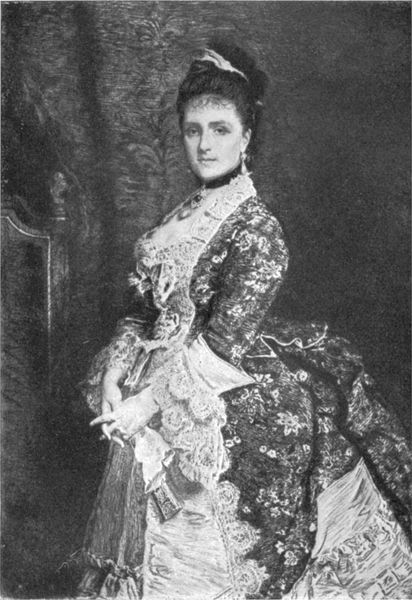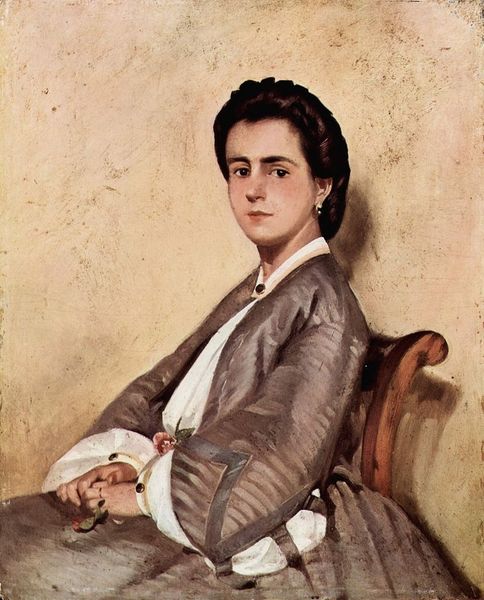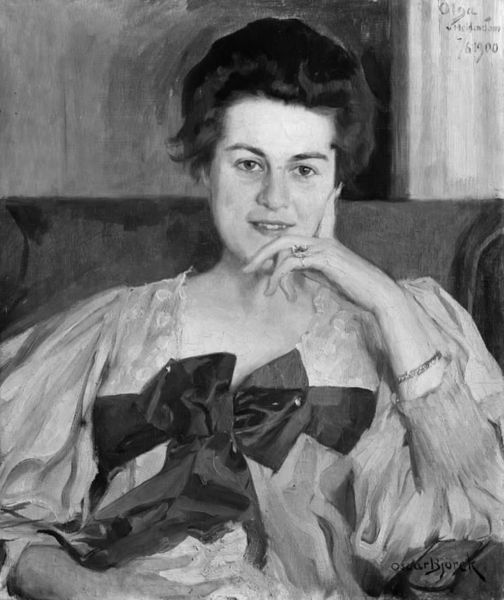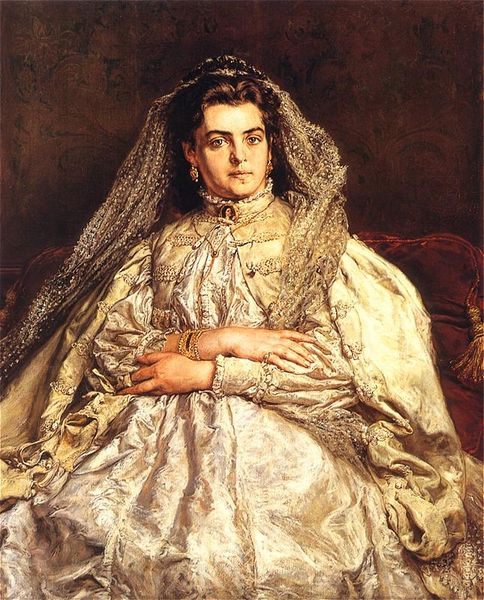
Copyright: Public domain
Editor: Here we have Konstantin Makovsky's "Portrait of A.Suvorina," painted in 1880. The woman's gaze is very direct, almost challenging. How do we understand the context around portraiture in this time period, and what was the message that this piece conveys? Curator: A powerful question! Consider the 1880s in Russia. This portrait of A. Suvorina wasn't simply about capturing a likeness. Makovsky, favored by the elite, paints Suvorina with markers of status. Notice the luxurious fur stole, the intricate jewelry. What do these items suggest to you about her social position and perhaps Makovsky's intentions? Editor: They definitely speak of wealth and belonging to the upper classes. Was Makovsky trying to ingratiate himself to Suvorina’s circle? Curator: Possibly, but there’s more to it. Aristocratic women became powerful patrons of the arts at this time. By painting Suvorina in this manner, Makovsky participates in and reflects a cultural shift. He immortalizes a powerful woman but also showcases his own skills, catering to a wealthy clientele who shaped the art market and funded major cultural institutions. He’s selling both an image of status and an ideal of female beauty acceptable to the Russian court. How does this relationship between artist, patron, and the public role of art affect your reading of the painting now? Editor: I hadn’t thought about it that way, but it reframes everything! I suppose art doesn't exist in a bubble. Curator: Precisely. Reflecting on it, it's fascinating to consider who art serves. In this portrait, Makovsky navigates complex relationships of power, status, and artistic expression, painting far more than just a face. Editor: This has changed how I see the purpose and power dynamics present within a piece! Thanks!
Comments
No comments
Be the first to comment and join the conversation on the ultimate creative platform.

